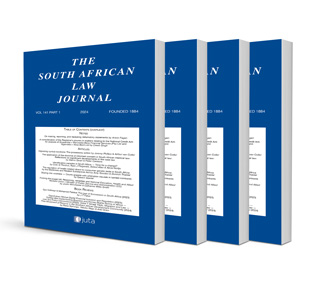The Implications of the Right to Equality in Terms of the Constitution for the Common Law of Contract

The Implications of the Right to Equality in Terms of the Constitution for the Common Law of Contract
Authors Deeksha Bhana
ISSN: 1996-2177
Affiliations: Associate Professor of Law, University of the Witwatersrand, Johannesburg
Source: South African Law Journal, Volume 134 Issue 1, 2017, p. 141 – 161
Abstract
This article considers the interplay between the common law of contract and the right to equality, as enshrined in s 9 of the Constitution, 1996 and given effect to by the Promotion of Equality and Prevention of Unfair Discrimination Act 4 of 2000 (‘the Equality Act’). Whilst s 9(4) of the Constitution makes it clear that the right to equality is horizontally applicable by way of the Equality Act, the relevant provisions must be read with the application (s 8) and interpretation (s 39) sections of the Constitution. In particular, I argue that it is important to reconcile the common law of contract with the Equality Act, so as to foster a mutually beneficial relationship between the two, rather than simply to apply the Equality Act bluntly to (potential) contracts without much regard for the common law of contract. I then show how such reconciliation ought to translate in more concrete terms, first in relation to an already concluded contract (or contractual clause) that purports directly or indirectly to discriminate unfairly against a person or group of persons and, secondly, in relation to a refusal to contract in circumstances where such refusal would likewise constitute unfair discrimination.